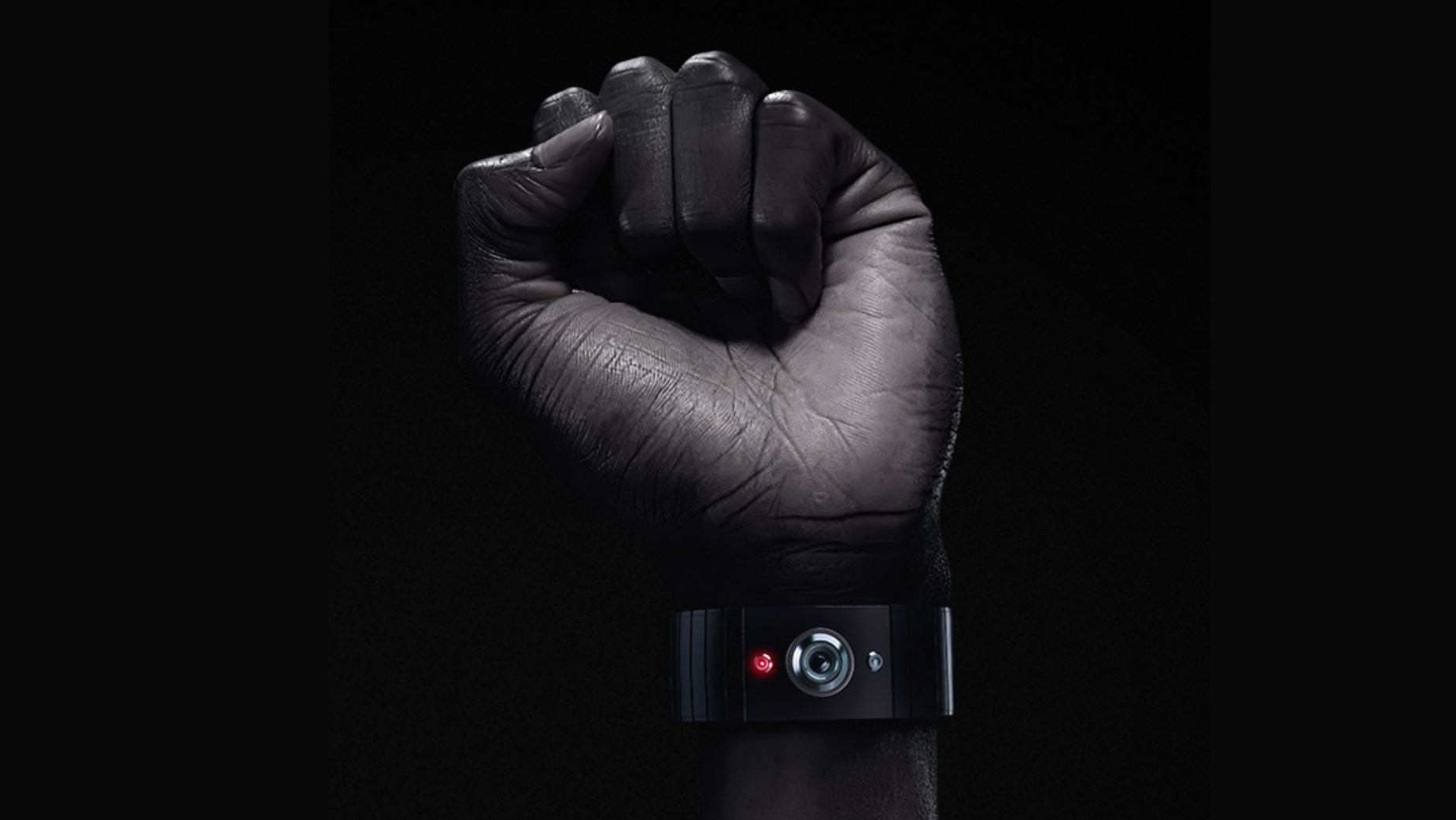The best action cameras in 2025: capture life's adventures, wherever they take you!
The best action cameras are small, simple, easy to use, and can go whether other cameras can't
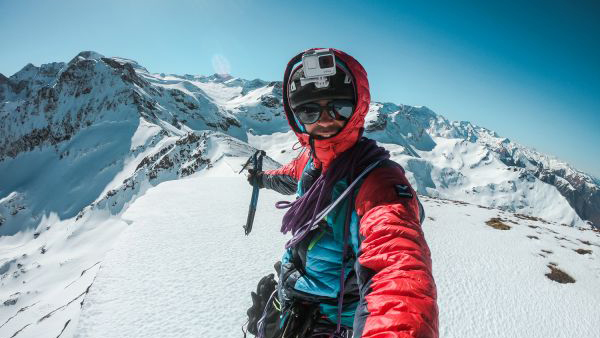
- Top Picks
- Best overall
- Best GoPro
- Best budget action camera
- Best 360 action camera
- Best GoPro for most users
- Best Vlogging
- Best value premium
- Best mini action camera
- Best modular action camera
- Best gimbal-stabilized action camera
- Cheapest 8K
- FAQs
- How we test action cameras
- How to choose an action camera
When I think of a tough little camera built to capture action, GoPro naturally comes to mind, doesn't it? It's so ingrained that I was out testing a competing brand and my then 7-year-old son called it "a GoPro".
GoPro may have pioneered the action camera, and dominated the space for years – but they haven’t always held the top spot. In many ways it has been edged out on tech grounds by DJI, and also faces competition from others, including Insta360 who offer (as the name implies) 360-degree cameras which are, frankly, better than GoPro's one effort.
GoPro, though, has fought back with some very cool features. The fact that this market is so dynamic speaks volumes about how challenging it can be to choose the best action camera.
So, with all this choice, there are a few key criteria I look for. An action camera needs to be rugged – resisting not only water but sand and dust. They also need to be easy to operate (the more action going on, the less you want to think about menus), have high resolution, and be easy to attach to your body for all kinds of sports and activities. It's also vital you think about how the camera can cope with your favorite activities – if caving is your thing, for example, low-light matters (and that's not a GoPro specialty, as you'll see).
These days a related factor is remote control – by phone app or remote-control accessories – and any ongoing costs. I'm especially looking at GoPro, which has enthusiastically added subscription services – a trend that other brands haven't lept to follow.
One final thing, before we get to where the action is (sorry). I urge you to think a bit about what – exactly – you want to do with the camera; even in this seemingly similar genre there is a variety of size, weight, and functionality. If you're attaching to a helmet, for example, a screen is less important than a low weight, while vloggers need a front monitor and, ideally, microphone connectivity.
I've also made another guide devoted entirely to budget action cameras.
Top Picks
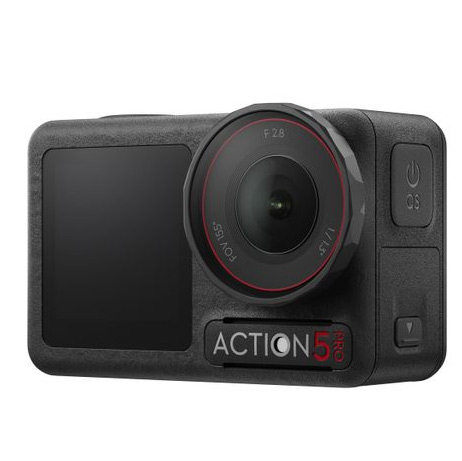
The Osmo Action 5 Pro boasts a bigger image sensor, so it performs better in lower light, plus brings new ideas like built-in storage, 10-bit recording, amazing battery life and a pressure sensor!
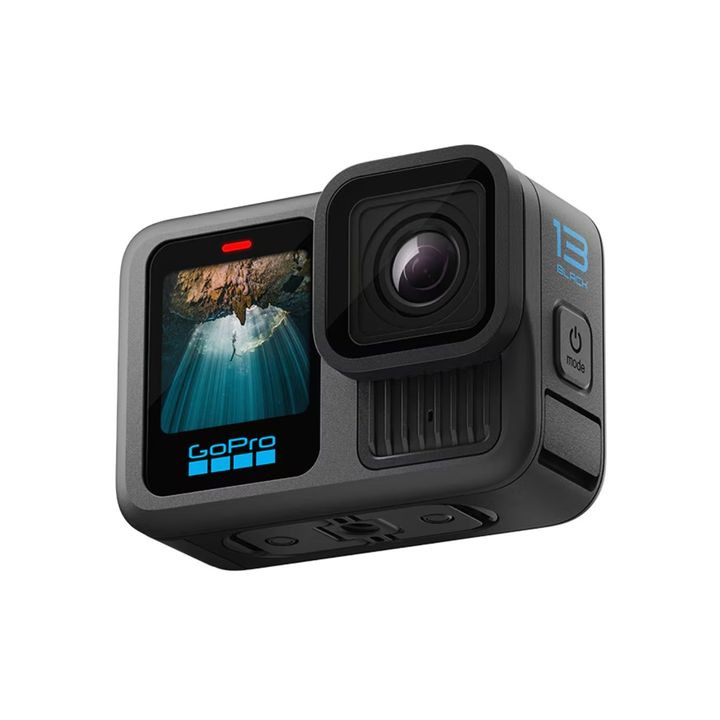
Replaceable lens adapters, 400fps slow-mo, GPS, and a 5.3K resolution make this the most powerful choice for most action – a huge improvement on the 12 and only let down by its low-light failings.
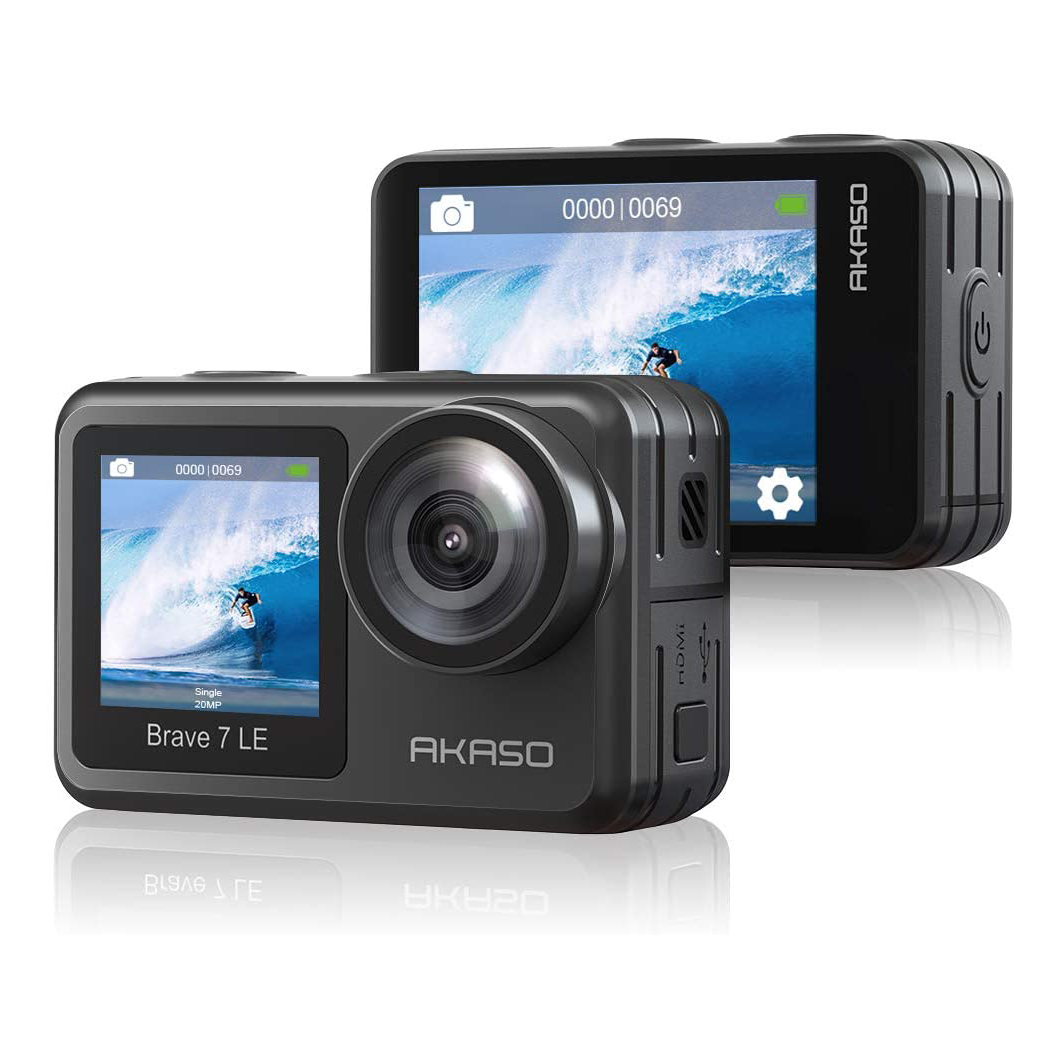
With 4K, dual screens, a waterproof housing supplied, 4K, and electronic image stabilization, plus a pile of accessories this has a lot going for it.
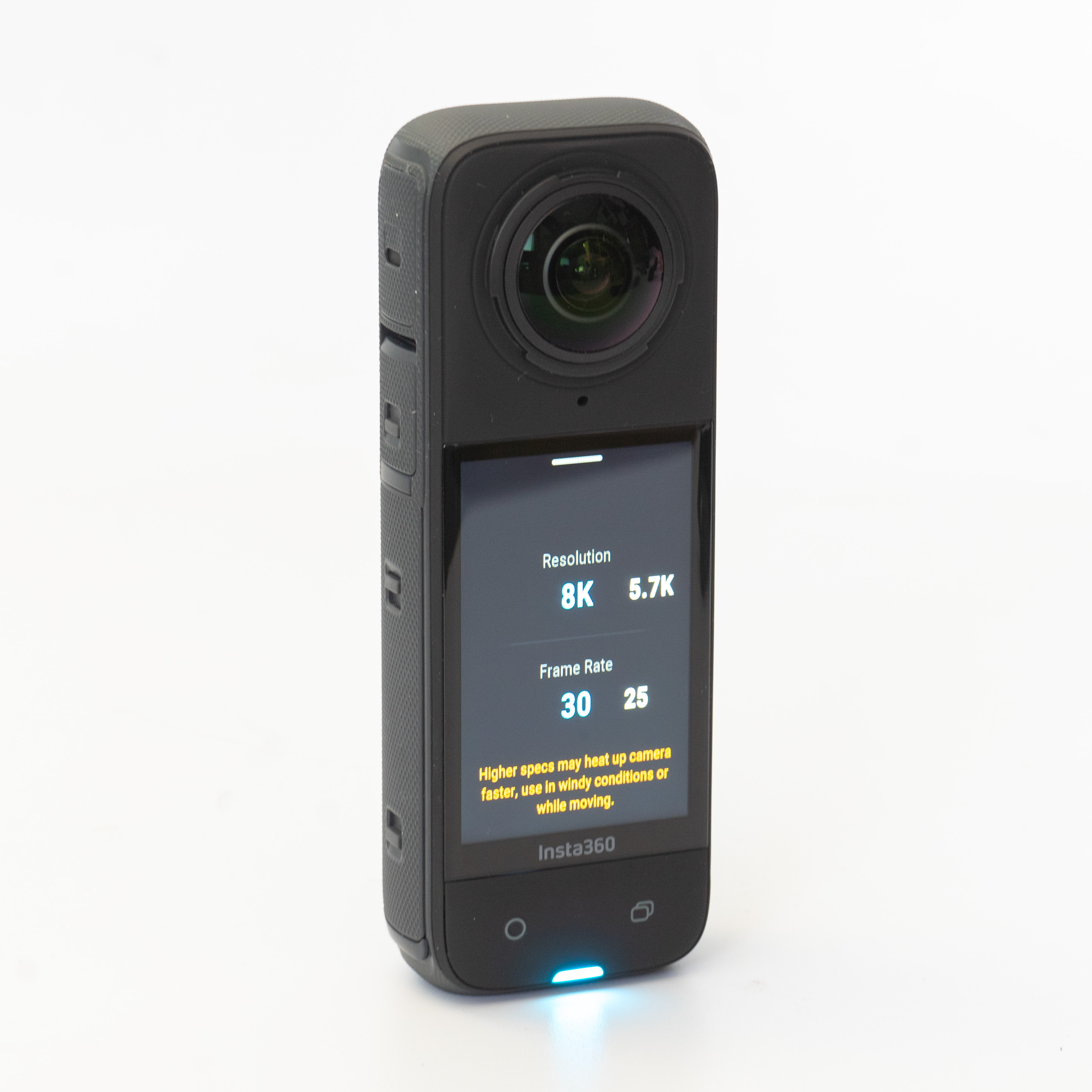
This is an 8K 360-degree camera, which lets you see everywhere and aim the shot later. That's amazing for action. It's also an great 4K action camera (two of them), and very rugged.
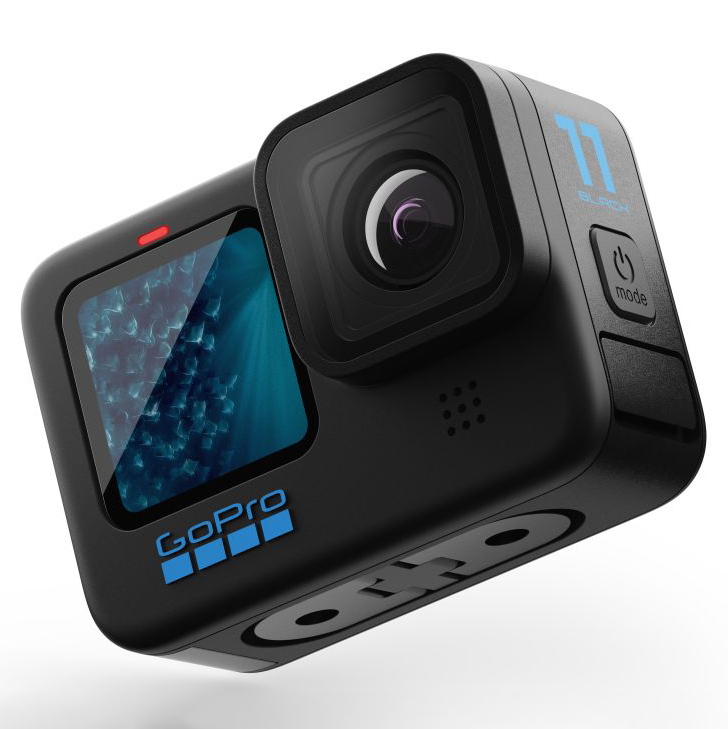
If you want the best balance of features & value, the GoPro Hero 11 has most of the same features as the newer Hero 13 except the fancy lens and magnetic mount, for less!
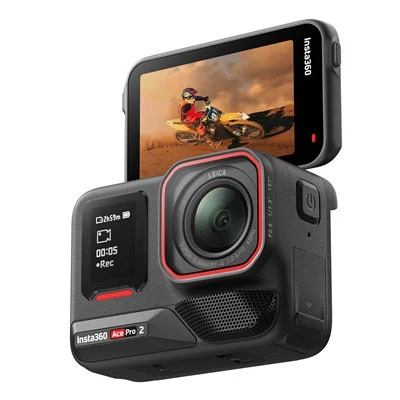
The 8K-capable Ace Pro 2 is incredibly powerful; the highest resolution on offer, tons of features, and great low-light performance, but the flip-up screen also gives it versatility.
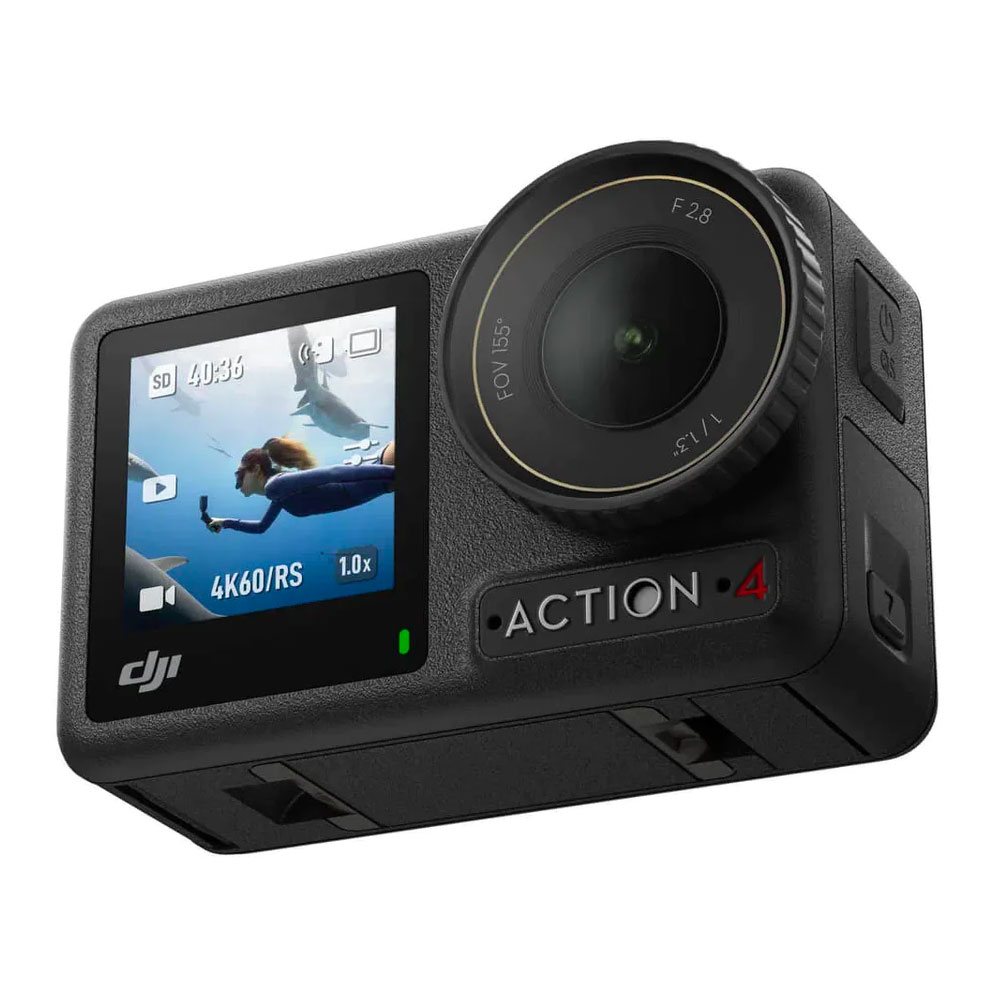
The Osmo Action 4 was already a GoPro-beater when it arrived, and now DJI has moved on and the price has come down – while the camera remains stunning.
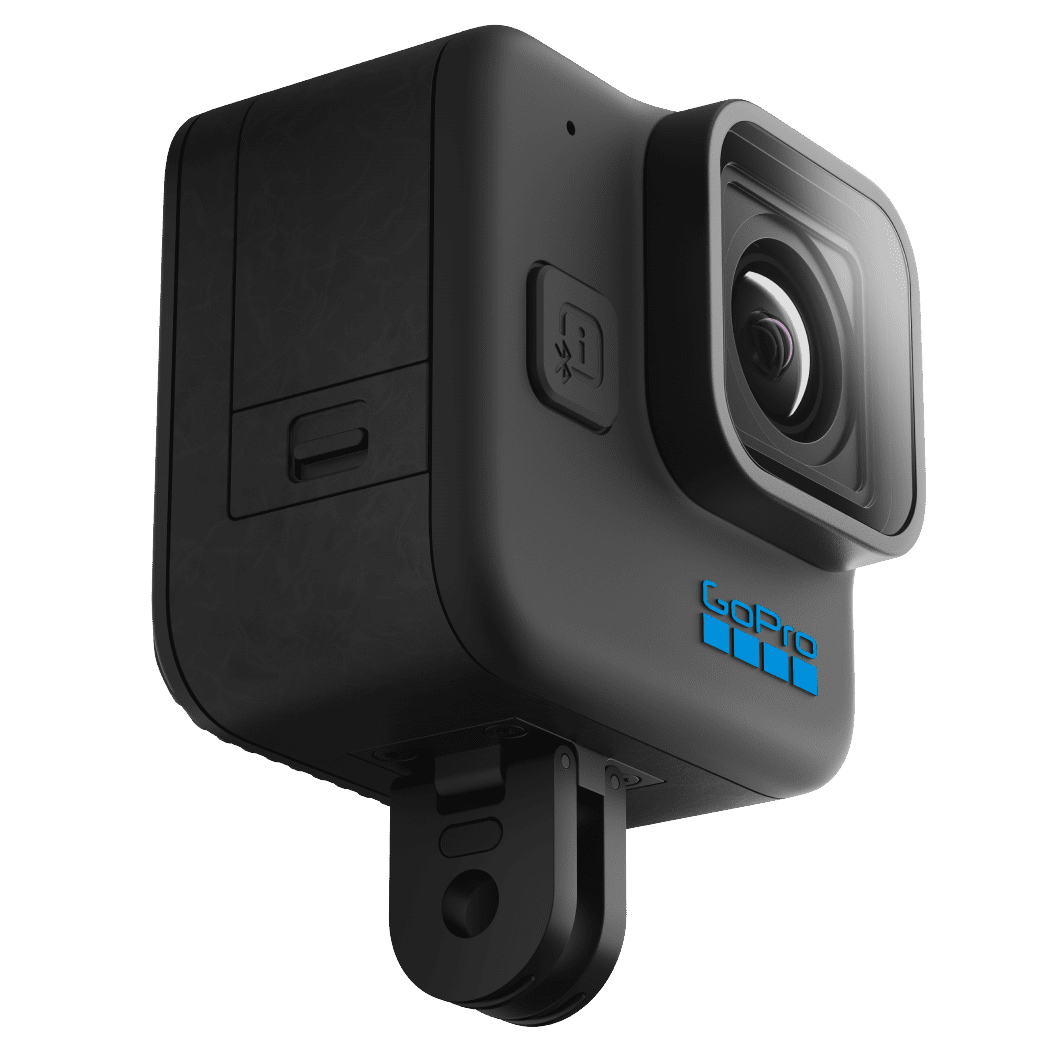
Compact action cameras are ideal for FPV drones or helmet mounts and, like many, this sacrifices the display to maximise the battery. Fold-out mounts improve portability and mountability.
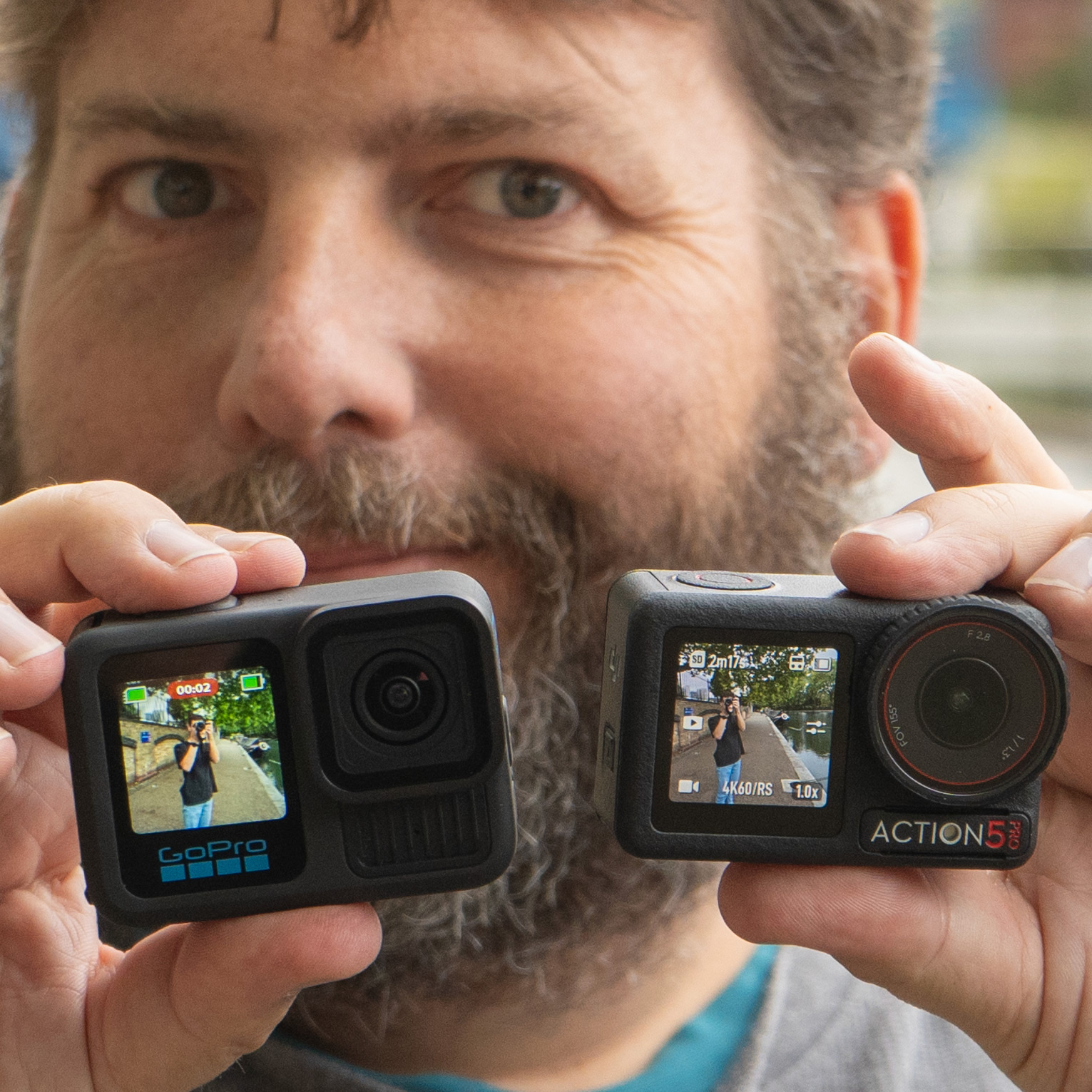
Adam is a big fan of action cameras, especially for drones (he's our drone guy – and the author of bestselling books including The Drone Pilot's Handbook). He's also been known to find ways to attach them to his bike and even snowboard (no, really), plus he owns and travels with a 360-degree camera, and tests as many as he can get his hands on.
The best action cameras
Why you can trust Digital Camera World
Best overall
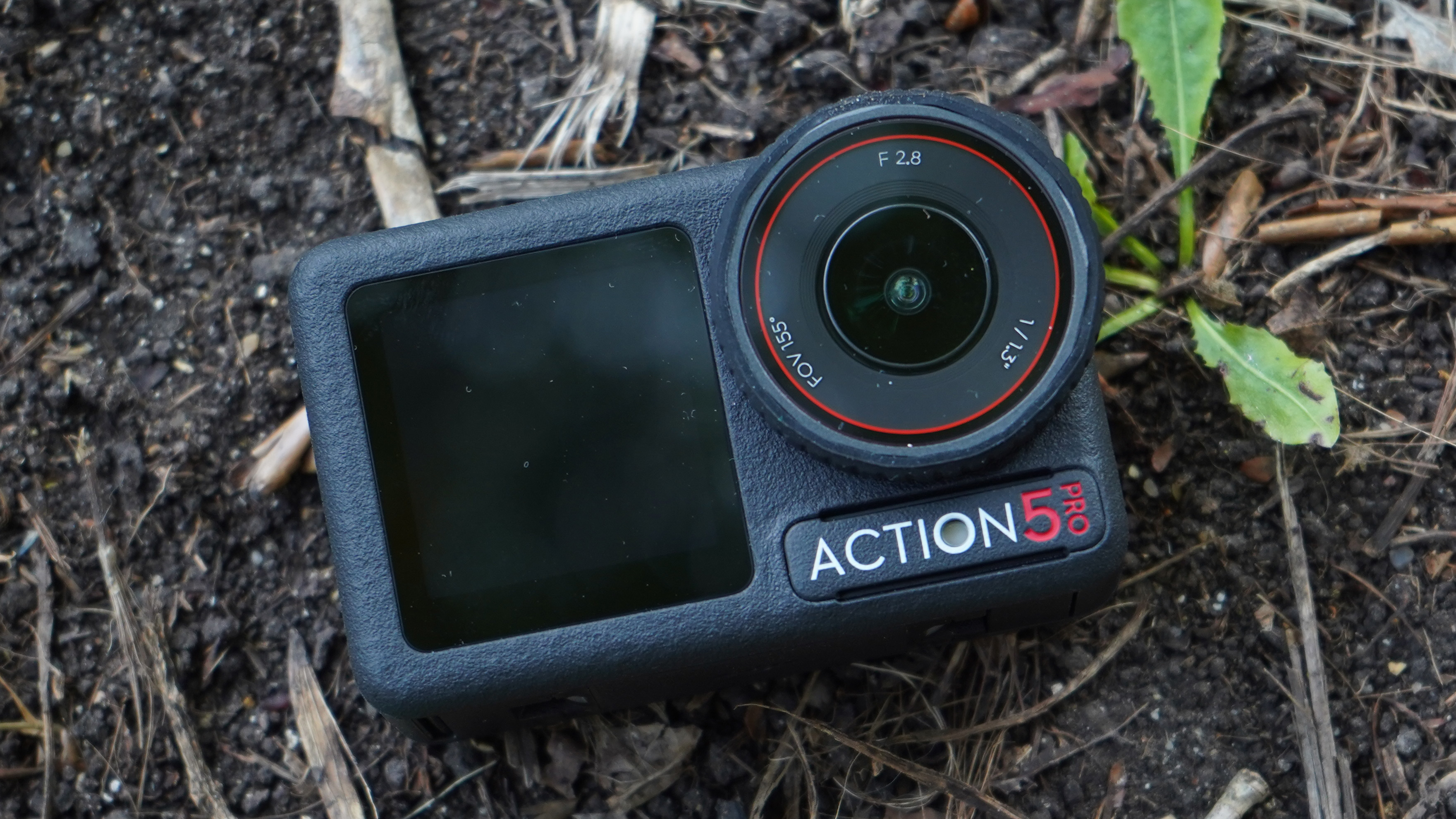

Specifications
Reasons to buy
Reasons to avoid
✅ You want to shoot in all conditions: Being able to work in low-light beats most action cameras
✅ You want a front touch-screen: The dual monitors are both surprisingly bright and high-res touchscreens, updates for this model!
❌ You want high-res slow-mo: Sadly the 240fps flow-mo is only 1080P.
❌ You want the best magnetic catch: OK, DJI did it first, but GoPro and Insta360 have done it slightly better since. It's a very minor quibble though!
The Osmo Action 5 Pro brings 10-bit video (real pro stuff) and an unexpected new feature – a pressure (altitude/depth) sensor to what was already the category leader. GoPro has looked to distinguish themselves by copying DJI's magnetic mount (and, to be fair, going a little better in the implementation) and the opportunity to pay more for lens modifiers, but, well, the best sensor tech is in DJI's camera.
The stabilized 4K video looks great and the camera can take a lot – not just rough and tumble but temperature extremes too, and it's waterproof to 20m without a case. Best of all, it has a larger image sensor than any GoPro, so it is better in lower light, making it more flexible.
Years ago, GoPro tried to take DJI's territory by producing a drone – the result, the Karma, was years behind the game and a catastrophe for the company. DJI's first Action camera came in 2019 and was close to GoPro (with no worries about falling out of the sky). Now DJI seems to have surpassed GoPro in their own backyard. Sweet revenge? For cavers and divers, in fact, it's not even a competition.
How can that be when GoPro have 5.3K to DJI's 4K? Sensor size. Viewing is probably 4K in the end anyway, but DJI's 1/1.3-inch imaging sensor picks up more light, which means it works better in low light.
DJI have specced things up a lot too, with some extra processing oomph and improved OLED screens. This enables a 'tracking' feature so you can have the camera 'follow you' even though it has no moving parts (crop as you move around).
The other reason DJI stay top of this list in my update (and I've now tried all of the new premium cameras from late 2024) is that they've introduced a new pressure sensor and it turns out that by taking GPS movement data from my Apple watch or DJI's remote watch accessory AND adding data from an on-camera sensor even more interesting positioning info can be added to videos so I've got to hand that to DJI, well done!
All this for a camera which not only beats the main GoPro on specs, but comes in at a lower price!
Read my full DJI Osmo Action 5 Pro review for samples
Attributes | Notes | Rating |
|---|---|---|
Features | 10-bit video, pressure sensor, large sensor, top notch image stabilization, good flat profile for pros, and both screens are touchscreen | ★★★★★ |
Design | Plain and simple design, waterproof without housing, and big usable screens – very simple, but usable. | ★★★★★ |
Video quality | Large sensor does the business in most situations – even caves – and processing is good if you want it. | ★★★★★ |
Value | For significantly less than the GoPro, offering better video and dynamic range, DJI wins here (as a premium product) unless you really want an anamorphic lens attachment! | ★★★★★ |
Best GoPro
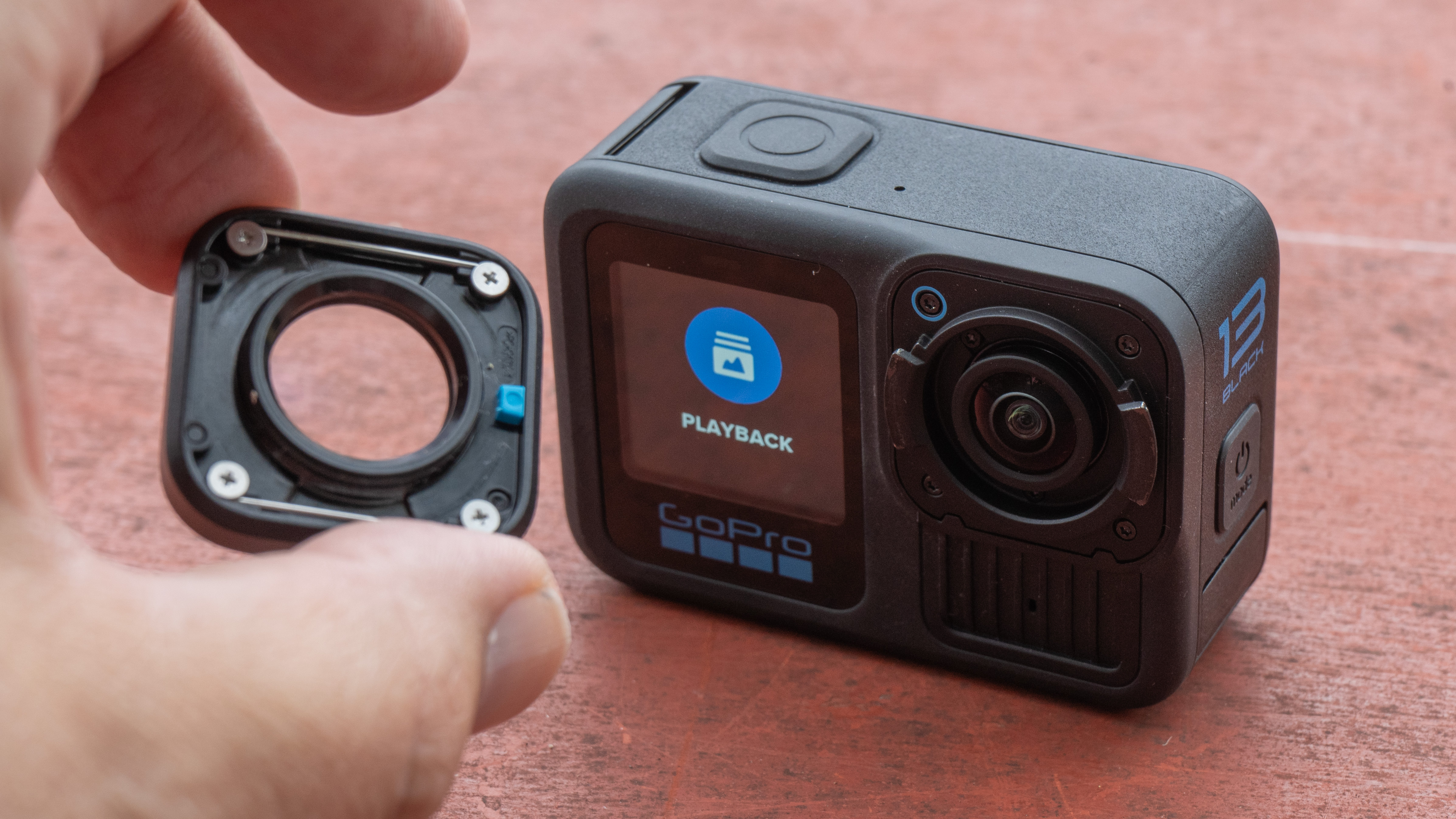
Specifications
Reasons to buy
Reasons to avoid
✅ You share across platforms: The 8:7 sensor will help you crop minimally across formats
✅ You want to experiment with lenses: Sure, they're adapters rather than real 'lenses', but the sensor system balances customization, ruggedness, and ease of use.
❌ You work in low light: GoPro's sensor hasn't got any bigger, so DJI and the AcePro are both better choices if you're planning on going caving or shooting at night.
❌ You hate subscription fees: GoPro will constantly be pushing you toward subscription fees.
GoPro's annual release schedule – requiring a new camera every year whether there is a worthy update or not – has not always been a good thing for the flagship Hero Black, and the previous 12 model was especially disappointing. Not only was it overtaken in terms of low-light image quality by DJI, but it actually took away a feature – built-in GPS – beloved of a good section of GoPro users without actually offering much new.
Another year and there still aren't any changes to the image sensor, but GPS is back and GoPro has added a detection system which makes swapping the lens on the camera practical – adding a whole raft of creative choices. That's atop a camera that, in adequate light, already had better resolution than the competition – 5.3K.
The lens mods aren't new, as such, but not having to play with the settings when you fit them is, which makes a lot of difference. Even better, the camera will tell you if you've made a poor choice with your ND filters, which is great for most people, making it a lot easier to get the right motion blur. A 21:9 anamorphic lens is coming too.
There are a few cherries on the cake too, like the 400fps slow-mo burst, though admittedly at 720P it's not something you'll want to put on a cinema screen. Or even a phone screen unless what's happening is amazing enough to distract from the detail!
The 27-megapixel camera and adaptable 8:7 sensor is a useful device for creators planning on shooting ones and reframing for different social platforms. The lens mods and the lens with a mod allowing up to 177-degree field of view. It's good, though it doesn't love low light any more than the Hero 11 Black.
The camera also has a new magnetic mount (though it still has the classic GoPro fingers, and these are still recommended for high-vibration work). Personally I didn't feel it was as strong as the DJI or Insta360 systems it seems to be inspired by, but it is reversible.
Other hand features are that you can narrate your action from headphones with built-in microphones like AirPods (and even the DJI Mic 2). Timecode Sync and GP-Log and LUT support come from the 12 too. That'll be especially useful as GoPro can tend to amp up saturation a little – it's all a matter of taste and is arguably part of the look, but it's good for editors to have help.
There is also no avoiding the fact that a big part of GoPro's business plan at the moment is up-selling customers to its subscription services; if you don't enjoy a lingering cost, avoid GoPro.
Please read our full GoPro HERO13 Black review.
Attributes | Notes | Rating |
|---|---|---|
Features | The new lens mount, sensor, the return of GPS, and 400FPS option are all great features alongside a top-tier list. | ★★★★ |
Design | The addition of a magnetic mount without dramatic alteration can be considered a triumph by long-term GoPro users with existing accessories. | ★★★★ |
Video quality | With 5.3K with great stabilization no real issues here so long as the light is good. | ★★★★★ |
Value | While it's a premium price, this feels like it's coming together as a premium product again after a less than perfect year (but we still don't like the idea of subscription features). | ★★★★ |
Best budget action camera
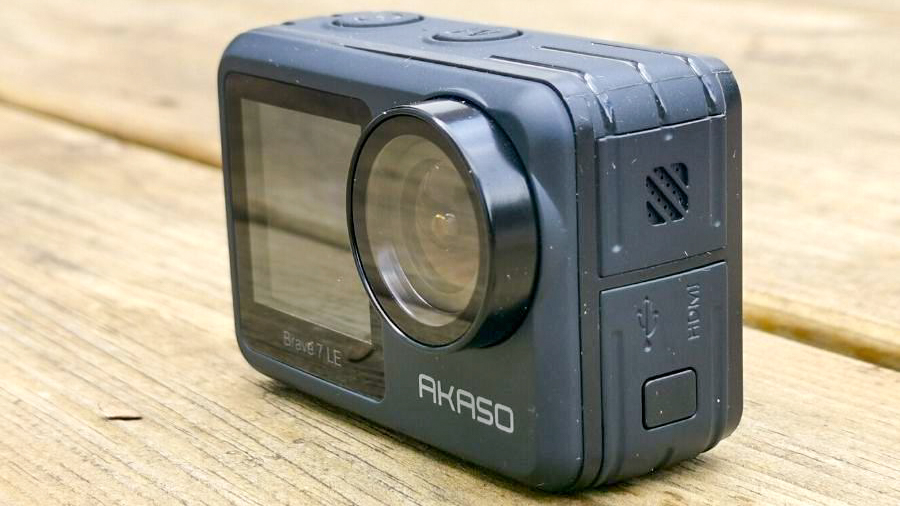
Specifications
Reasons to buy
Reasons to avoid
✅ You are on a low budget: The price here is very sensible
✅ You want dual screens: Selfie video (vlogging) is easier thanks to the front-facing monitor
❌ You want fast & high res: It can't capture 4K at 60fps.
❌ You get wet: You need to use a housing (included) for waterproofing over 1m
The Akaso Brave 7 LE continues to impress with its budget-friendly features, making it an excellent choice for vloggers, and one of our best GoPro alternatives. It captures 4K video and boasts a surprisingly effective 6-axis stabilization system, especially considering its price point.
While it’s unfortunate that you can’t achieve 60fps at 4K resolution for high-speed action, the 30fps speed is perfectly adequate for most vlogging purposes. Personally, I find this speed suitable most of the time, and when I need more excitement, I’m willing to sacrifice a bit of resolution. (Worst case you can try and sharpen it a bit in the edit). Having the option for 2.7K at 60fps is a nice touch—at least there is no need to drop all the way down to 1080P.
The front-facing screen makes it ideal for vlogging, although it’s worth noting that the camera is quite compact and may take some getting used to. Additionally, the waterproofing without housing is minimal, so be cautious before taking it for a swim in the ocean! Overall, the Akaso Brave 7 LE offers a GoPro-lite experience for budget-conscious vloggers.
Read our full Wolfgang GA400 review for more details
Attributes | Notes | Rating |
|---|---|---|
Features | Dual screens are great in a value camera | ★★★★ |
Design | Good looking but not natively waterproof | ★★★ |
Video quality | Decent video with stabilization (though not. at DJI/GoPro standarrds) | ★★★ |
Value | Great for vloggers able to handle sound separately | ★★★★★ |
Best 360 action camera
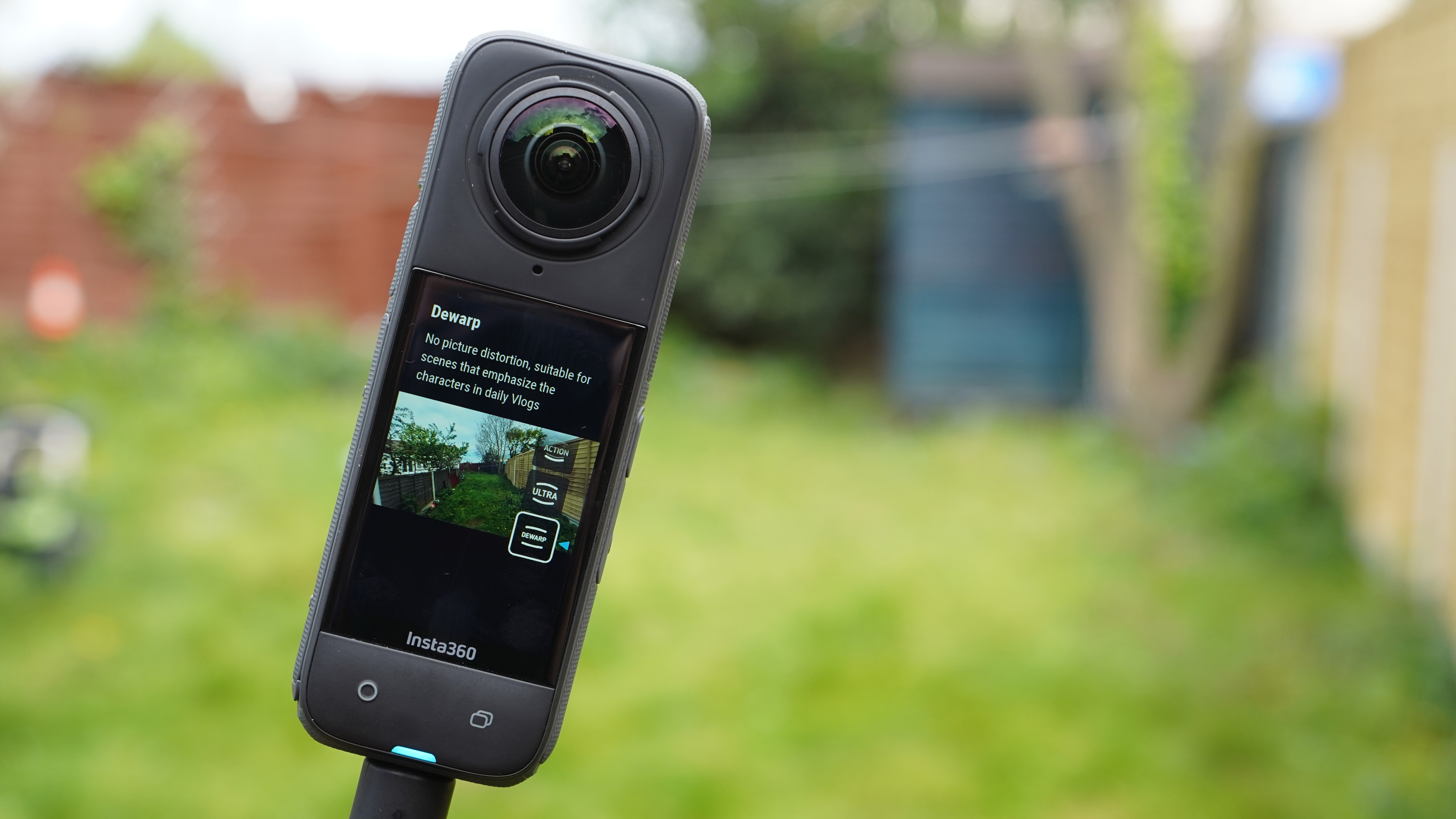
Specifications
Reasons to buy
Reasons to avoid
✅ You want 360 video flexibility: 8K is brilliant for 360-degree video, so you can re-direct the camera after the fact and get good resolution.
✅ You want the choice: Thanks to the one-camera mode, it works as a good 4K60fps action camera
❌ You are on a tight budget: A 360-degree camera isn't the cheapest option, but if you're interested check our 360-degree cameras guide.
❌ You want top-notch low-light: With 1/2-inch sensors the HDR is good, but low-light performance is only so-so.
One of the biggest problems with shooting action is aiming the camera, so what if you could do that afterward? That's the basic thinking behind a 360-degree camera. Beyond that, though, there is a lot more.
There are times when handling even an action camera's wide-angle lens becomes a problem, and that's where a 360-degree action camera can step in. With two back-to-back lenses and enough smarts to eliminate a selfie stick from the footage, this almost magic camera can capture an image from a point within reach looking any direction you see fit.
The Insta360 X4 isn't just a resolution boost over the X3, it also fixes a ruggedness issue. Both cameras are waterproof in body to 10m thanks to smart doors, but the X4 has removable lens covers which make the device more flexible and overcome one of my main worries.
Something I have done with the X3, and can be done with this camera too, is to use Insta360's custom bike attachment – which holds the camera a little way in front of your bike on a carbon pole, over the front wheel. I was amazed at the footage which makes it look like I'm cycling toward a perfectly controlled drone. Better still, by syncing the camera with my phone you can draw GPS data and have it overlaid, in the form of a speedometer, by the Insta360 app before sharing.
And that's the other crucial aspect of the Insta360 offering. The company has created an excellent phone app so you can edit on the go – redirecting the camera's aim or relying on AI to track your subject. For more serious uses, they have also created a Mac/Windows app and plugins for Final Cut Pro & Premier.
The upshot is that this is very definitely an action camera, and offers angles and styles of action which have the potential to put you ahead of the pack.
Read my full Insta360 X4 review for more details
Attributes | Notes | Rating |
|---|---|---|
Features | There are a lot of possibilities to play with standard designs can't match | ★★★★★ |
Design | Dual lenses less vulnerable thanks to removable guards | ★★★★ |
Video quality | 8K is much better than 5.7K 360, but 'aimed' cameras are still better and low light isn't perfect | ★★★★ |
Value | Either a great deal (if you want 360) or a pricey action cam! | ★★★★ |
Best GoPro for most users
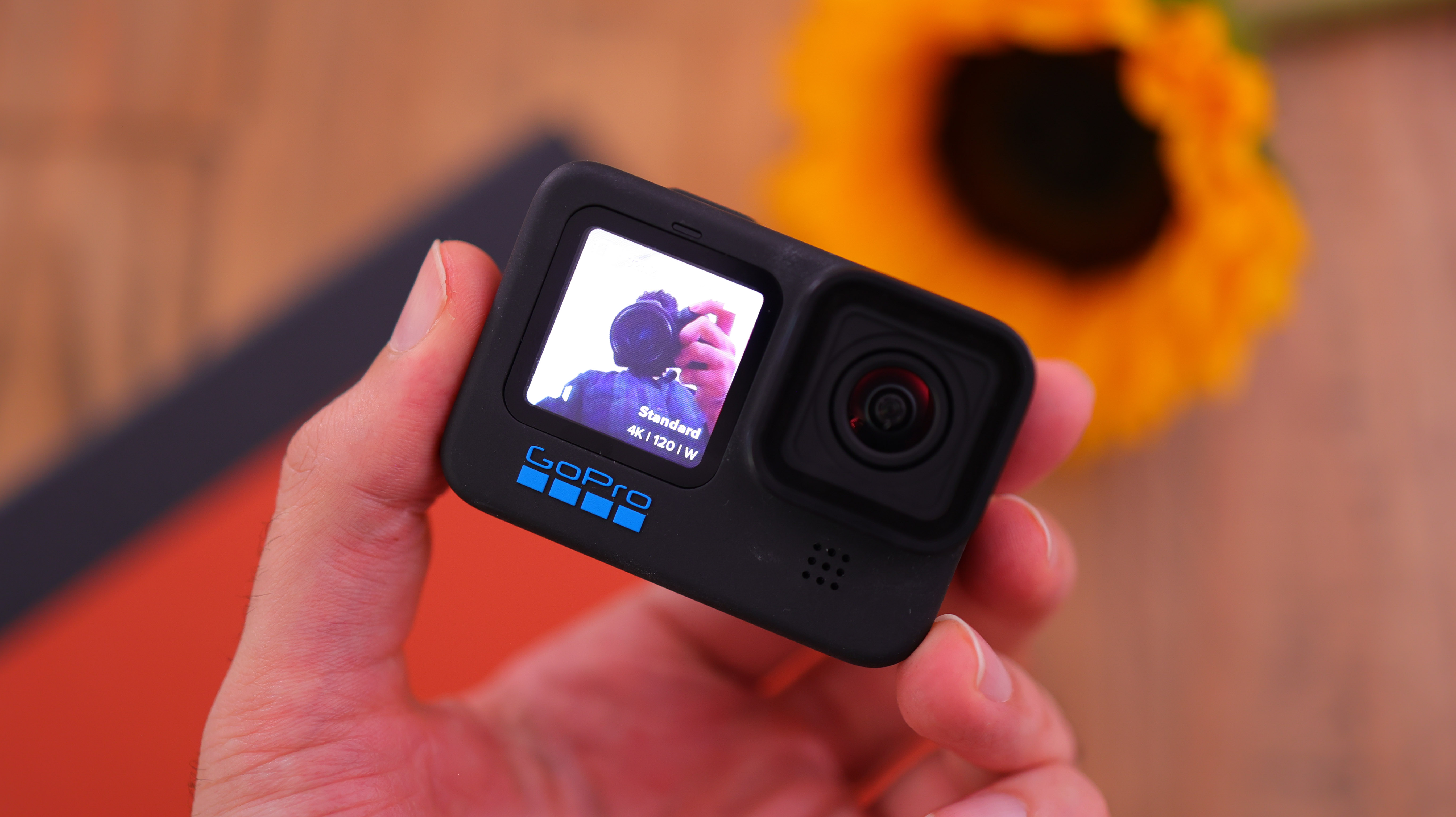
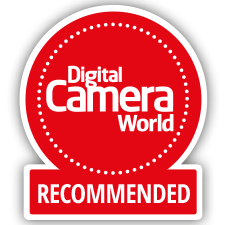
Specifications
Reasons to buy
Reasons to avoid
✅ You share across platforms: If you edit the same clip across platforms the 8:7 sensor will help you
✅ You want to record your speed: This is the last GoPro with built-in GPS, a great feature for recording your movement
❌ You want external microphones: GoPro will need you to buy an external media mod to connect a microphone
❌ You want to shoot in low light: GoPro cameras don't love working in lower lighting.
Despite the Hero 11 Black not being the newest model, GoPro dropped the GPS functionality for the 12 – a generation to forget – so if you don't need the magnetic clips and lens modifiers of the new 13 then this is a good route to save money on the iconic brand!
As well as still getting the GPS (which even DJI expects you to do with a watch, not in camera) this is the iconic GoPro with 5.3K recording, image stabilization (HyperSmooth 5.0), horizon lock, horizon levelling, the ability to capture high-res 240fps at up to 2.7K.
You can opt to crop to a more normal 16:9 video proportion when shooting, or record the full 8:7 shape (all 5312x4648 pixels - that's 23 megapixels, and the stills are up to 27). In both cases the camera can capture it at up to 5.3K at 30fps (4K at 60fps).
For me, the logic of recording 5.3K in the nearly-square proportions of 8:7 makes the most sense if you're going to be cropping into different shape for assorted social platforms. Given just how many pixels are on the sensor, as well as getting a 23MP pic, the footage can be cropped losslessly for 4K portrait, landscape, and square clips from a single video.
The external design hasn't changed much since 2019, but the camera's software has been simplified successfully, and GoPro's companion app, Quik has also been improved.
The electronic image stabilization is excellent (unless you're working in lower light), and the camera has a lot of nice features like Hindsight (capture 30 seconds before you hit the shutter), live streaming, webcam mode.
With best-in-class stabilization, great-looking video (until things get dimly lit or dark), and some fun new modes like light painting, the Hero 11 Black is an excellent addition to the line. The Hero 11 Black's 8:7 aspect ratio is also a standout highlight for content creators. Able to shoot in 5.3K resolution, 8:7 video at up to 30fps,
On top of 8:7 video, the Hero 11 Black captures 5.3K resolution video at 60 fps, 4K resolution video at 120 fps, or 2.7K resolution at 240 fps. You can also grab 27MP stills from 5.3K video. Overall this is particularly appealing to folks who use multiple social platforms, and GoPro does have good software (though it'll definitely spend time trying to upsell you its subscription plan).
Read our full GoPro Hero 11 Black review for more details and GoPro Subscription explained: what you get, and is it worth it?
Attributes | Notes | Rating |
|---|---|---|
Features | Love the GPS, and the 8:7 sensor is handy for social creators | ★★★★ |
Design | It's something of a standard, though the front screen is a monitor only | ★★★★ |
Video quality | With 5.3K (and10-bit log for pros) | ★★★★ |
Value | You get a better deal on this than the newer model (which lacks the GPS) | ★★★★★ |
Best Vlogging
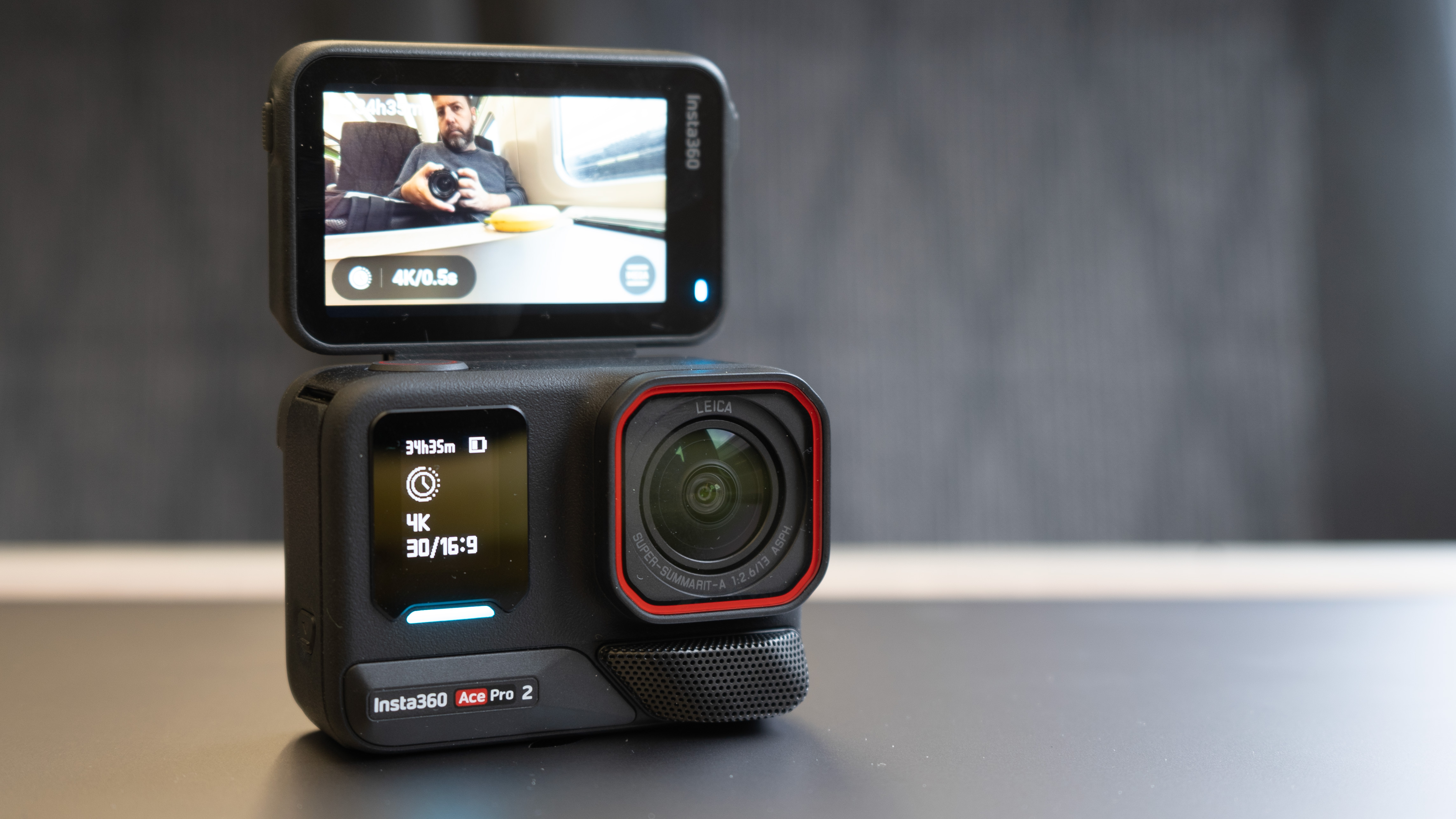

Specifications
Reasons to buy
Reasons to avoid
✅ You want quality: It's difficult to argue with 8K resolution, and the sensor size matches the class-leading DJI.
✅ Feature-rich but not overwhelming: The camera's snappy processing and sensible menu design mean it's not troublesome to use, but it has tons of features and modes available – it can even be a dash cam!
❌ You want small and low-weight: This isn't the most compact action camera, so if that's what you need, look elsewhere.
❌ You have no need for the flip screen: To be honest, I found uses for it I didn't anticipate as my test wore on, but it does add size.
Proof, in action camera form, that 'different' is not equal to 'worse'. For many, in fact, it might be the better choice to move slightly away from the traditional form factor as Insta360 have done here.
Some of the specs for this action camera are out-and-out best, too – there are no other 8K cameras on the list, so top marks. Insta360's thermal management and processing is to be commended, and this is cleary intended to (and successfully sits next to) the GoPro 13 and DJI Osmo Action 5 Pro cameras as a premium contender.
OK, it's a bit bigger and heavier than some of the others at 72 x 52 x 38mm (though it's fiddling small change in most situations, but that buys you a 2.5-inch flip-up touch screen. You might worry about it bing delicate, but that is far from the case – it isn't much of a burden when it comes to ruggedness – you can still be very violent to the camera and it's not coming off (I tried!)
Quality and ease of selfie/vlog shooting are the priorities in this design, and I dare say for quite a few action camera users, and to be honest the results speak for themselves.
The menu system and app are arguably the best in the business, and it's also noteworthy that the camera crams in extra features you might not have thought of, like a dash cam mode (that 4K footage will spot license plates, and the low light imaging is good!)
See my Insta360 Ace Pro 2 review with sample videos
Attributes | Notes | Rating |
|---|---|---|
Features | Everything you could wish for. | ★★★★★ |
Design | This is brilliant and innovative. | ★★★★★ |
Video quality | For me, I think there is a slight tendency toward saturation, but the detail is spectacular. | ★★★★ |
Value | It's tough to say the price is entirely as good as some of the other premium action cameras, but you do get extra features. | ★★★ |
Best value premium
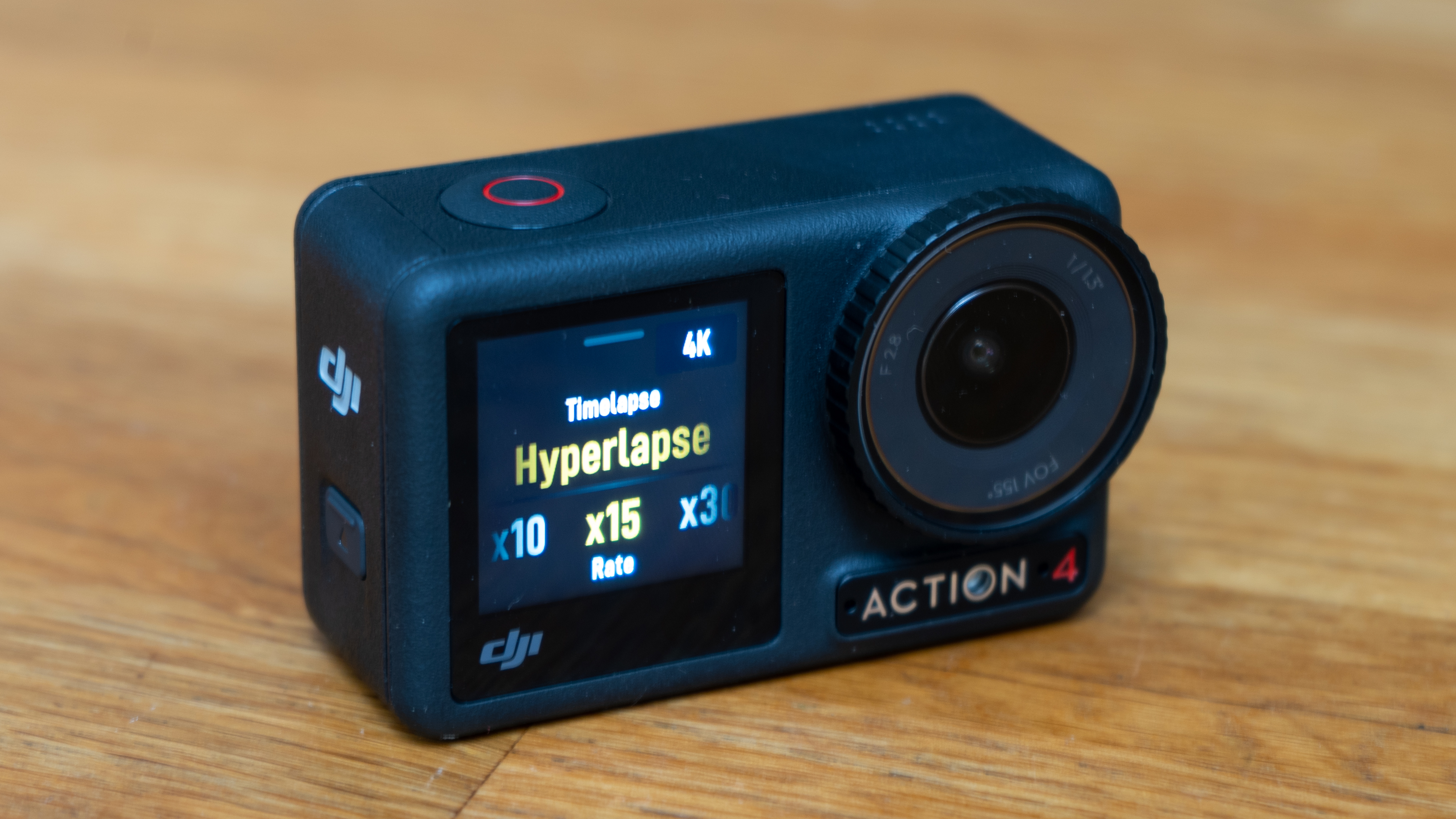

Specifications
Reasons to buy
Reasons to avoid
❌ You want high-res slow-mo: Sadly the 240fps flow-mo is only 1080P.
❌ You want to re-purpose video across platforms: With the DJI the cam can be rotated, but some might prefer to re-edit to different platforms from 5.3K
✅ You want to shoot in all conditions: Being able to work in low-light beats most action cameras
✅ You want a front touch-screen: The dual monitors are both touchscreens for control
The Osmo Action 4 was my choice (and, to be fair, many others) as the best action camera – the one that comfortably beat GoPro off their top spot at their own game. Unless you're especially excited by swappable lens modifiers, then GoPro actually hasn't really caught up with this camera yet, while DJI has moved onto the Action 5 Pro which means this brilliant device is now often found for a very tempting price.
The main reason DJI moved ahead of GoPro is the larger image sensor, making it unarguably better in low-light situations. But, you may ask, GoPro has 5.3K to DJI's 4K? Well, since you're likely to end up viewing 4K, that is moot. The sensor at 1/1.3-inch means there is more area to collect light. Physics is on its side! If you like going in caves, or, frankly, shooting video indoors (or in the north of the US, or somewhere like England during the 11 months of winter).
It's easy enough to see that on a spec sheet, but that comes across when I tried darker scenes with the image stabilization turned on – whether it's the better sensor, better electronic image stabilization, or both it's hard to know, but it's clear.
Video-wise, you'll also see video seems more natural rather than over-saturated, perhaps helped by the dedicated sensor. The camera also has the D-Log M flat profile, which makes color grading easy (especially if you're matching with drone footage).
In terms of attaching, the camera doesn't have fold-out clips; instead it has a clip that magnetically aligns (and is strong enough for motorcycling) so you can more easily attach and detach it (though you might find yourself wanting more of the magnetic attachments).
The fact that Action 4’s isn’t interwoven with subscription software is one I and many will wholeheartedly appreciate, too. There is still an app for simple control via your phone, and another for editing – it's clean, simple, and easy to use.
Read our full DJI Osmo Action 4 review for more depth.
Attributes | Notes | Rating |
|---|---|---|
Features | Top notch image stabilization, good flat profile for pros, and both screens are touchscreen | ★★★★★ |
Design | Plain and simple design, waterproof without housing | ★★★★★ |
Video quality | Large sensor does the business in most situations – even caves! | ★★★★★ |
Value | For significantly less than the GoPro, but arguably better image quality and with a better app and dual touchscreens the DJI wins here (as a premium product) | ★★★★★ |
Best mini action camera
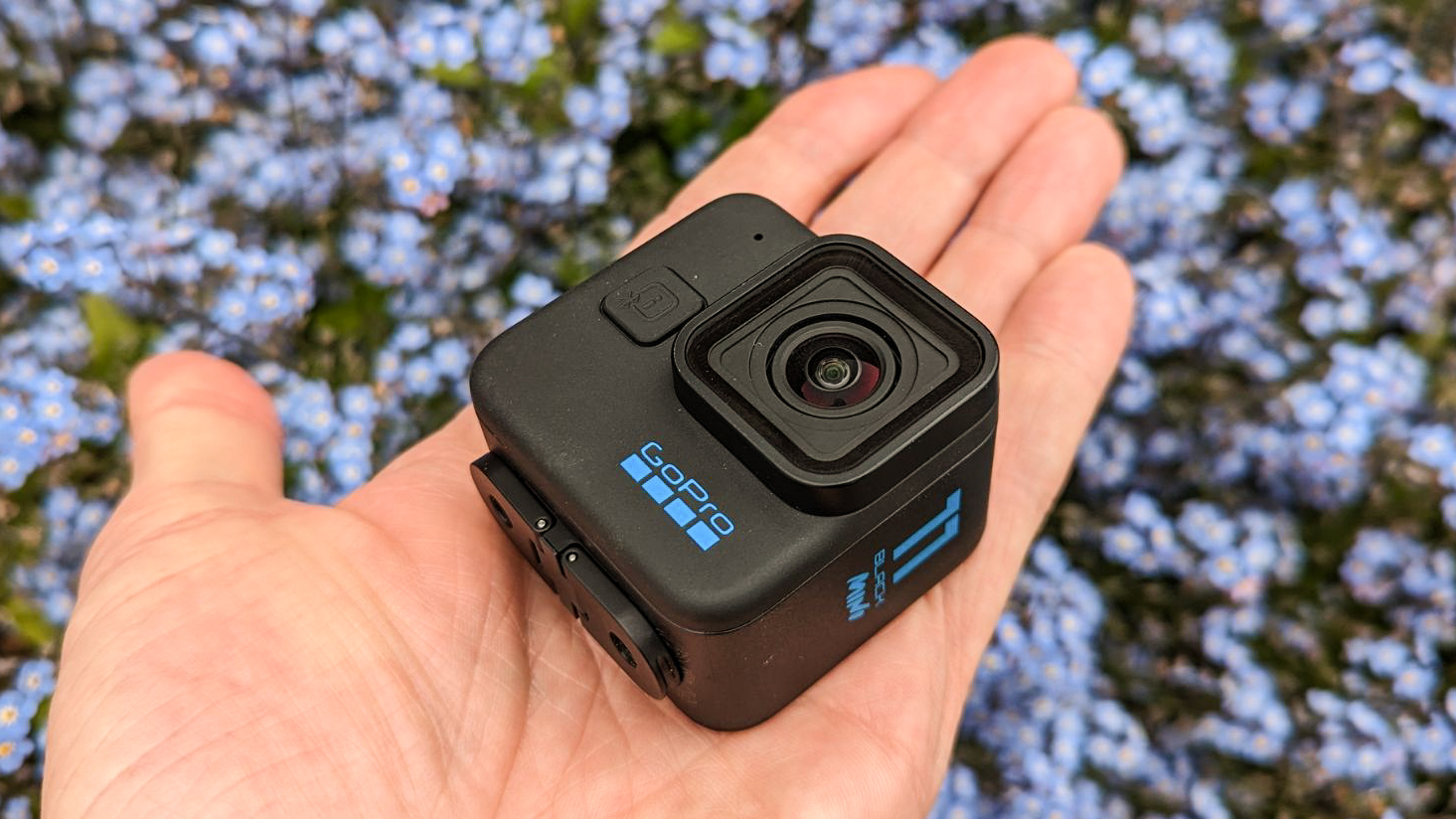

Specifications
Reasons to buy
Reasons to avoid
✅ You share across platforms: The 8:7 sensor will help you crop minimally across formats
✅ You want a small 4K GoPro: It'll fit in a smaller location
❌ You want an on-camera screen: There isn't one, simple as that! Setup/control is mostly via an app.
❌ You want the speedometer: The full-size Hero 11 (but not 12) has GPS to track speed, but the Mini doesn't
With no displays and a smaller form factor than the Hero, this version of the GoPro is well suited to those needing to save on size and weight – it's especially useful for FPV drone pilots or cyclists who don't want something pulling their helmets down. Since few extreme sports will actually allow a lot of time for shot composition, many will have little reason to opt for a more complicated device – video can be reviewed afterward using the GoPro Quik app, or the card downloaded to a computer for editing.
Though we're no fans of the subscription system GoPro is so keen to push users toward, we can't deny the quality of the device and the common sense behind things like the fold-out action-camera fittings and the ability to run continuously from a USB-C power pack.
There are sensible alternatives to this device in the DJI Action 2, among others, but it has to be said that this is a rugged device which for the kinds of violence where you wouldn't want a display screen might make a lot of sense. I used to use the GoPro Hero Session – this camera's predecessor – on my FPV drones and it survived a few heavy landings. There is nothing about this that makes me feel it wouldn't.
Read our full GoPro Hero 11 Black Mini review for more details
Best modular action camera
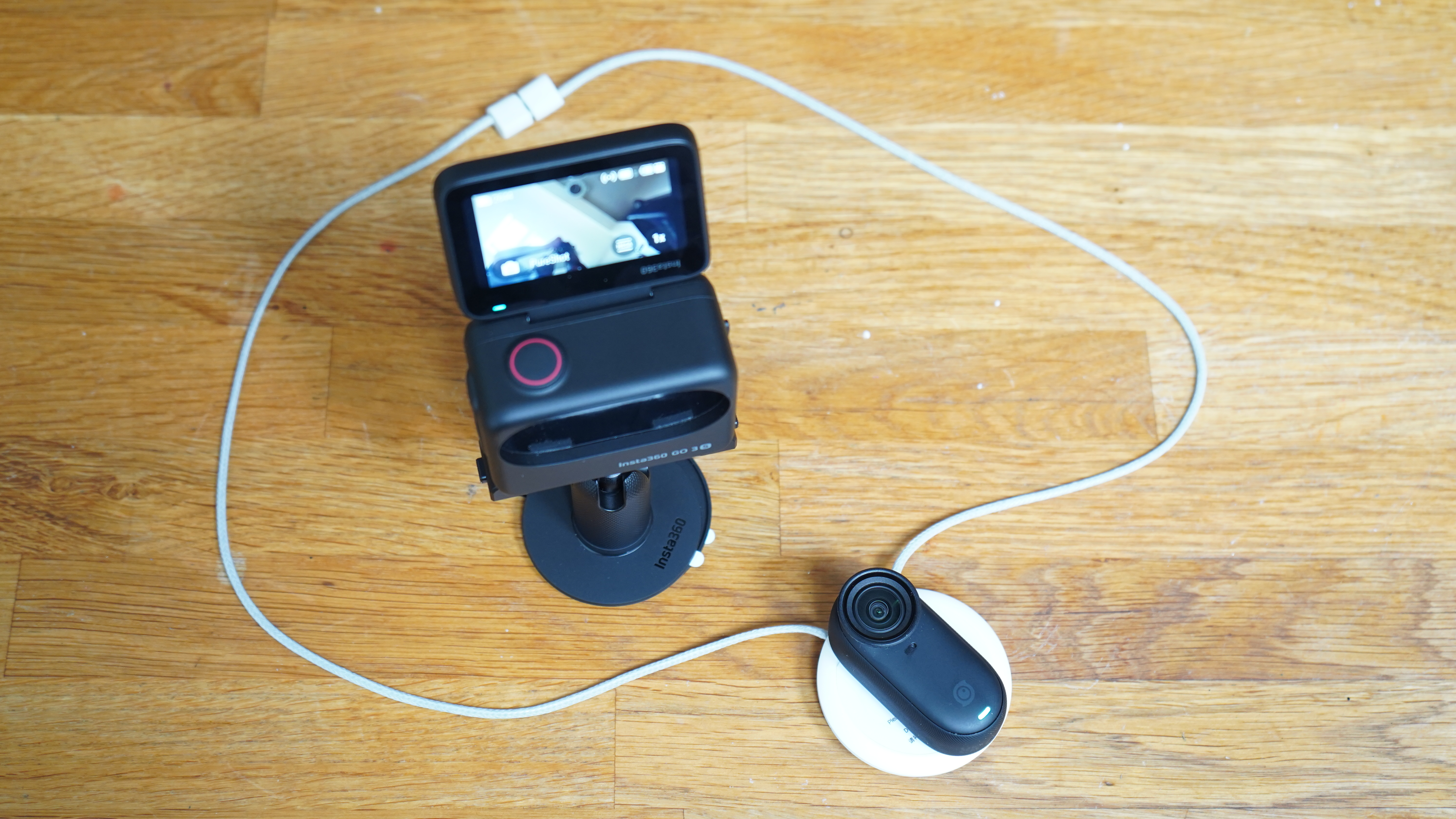
Specifications
Reasons to buy
Reasons to avoid
✅ You need a wearable: The tiny camera can easily be worn on most clothes
✅ You want flexibility: The housing helps top up the charge, like an Airpod
❌ You want 4K: This is a 2.7K camera
❌ You need simplicity: You will need to manage the camera and accessory/mount
Some action and some vlogging needs a smaller camera to get closer to the action, get a near perspective, or be clipped to your clothes in a way that just doesn't draw too much attention. The tiny Go 3S is perfect – it is itself a 4K update to the Go 3, and, like its predecessor, is available in white or matt black.
The tiny cameras (3 or 3S) can fit into the included ActionPod body, and is held magnetically. The case houses another battery and a 2.1-inch flip-up touchscreen. It is also, effectively, the camera's charging dock. Admittedly the imaging sensor prefers better weather (who doesn't?) but versatility is what you're paying for with this ultra-lightweight camera. The built-in memory is re-assuring too (no water ingress point), and the image stabilization is impressive; close to matching the best action cams.
The tiny waterproof cam can also be worn on a neck pendant so it looks like it is pinned onto clothes, like a badge.
That's a key point, by the way – the camera's battery is 140 minutes in the pod, but an absolute maximum of 38 minutes when worn alone, so there are limits.
For those who don't mind editing, it is a bit of a shame that the improved camera in the 3S has a slightly narrowed 16mm EFL view, but if you get the view right it's actually time-saving. Insta360 software has great editing features, and it's reassuring that even since release firmware updates have brought extras like the ability to use an Apple Watch as a remote, or the cam as a webcam.
Incidentally, Insta360 have even more recently taken this flip concept to a high-end 8K action camera you'll also find on this list!
Read our full Insta360 Go 3S review and see sample video
Attributes | Notes | Rating |
|---|---|---|
Features | Flexibility is the main feature | ★★★★ |
Design | A brilliant solution to a relatively niche problem (that might be getting less niche) | ★★★★★ |
Video quality | Without 4K and a small sensor it's good, but could be better | ★★★★ |
Value | Since in-body this is more or less. anormal 4K action camera, this is quite a good value cam from one perspective! | ★★★★ |
Best gimbal-stabilized action camera
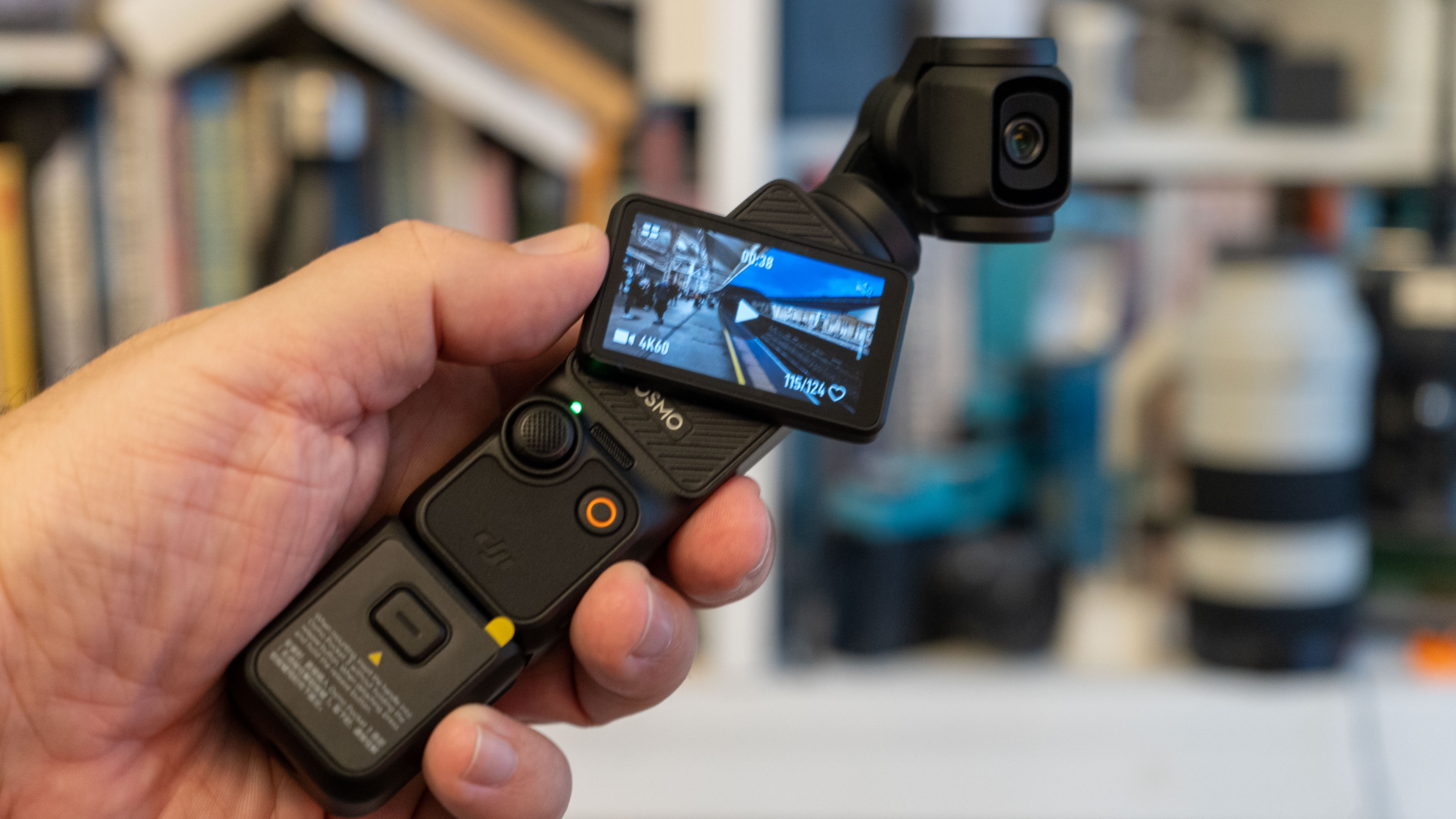
Specifications
Reasons to buy
Reasons to avoid
✅ You need to vlog: Stable shots and mic compatibility are well covered here.
✅ You want a stable shot: The gimbal offers possibilities software stabilization can't manage.
❌ You want rugged: It's tough for what it is, but it won't survive as much as a true action camera
Is the DJI Pocket 3 an action camera? Well, it's not rugged and waterproof, but given a lot of action cameras are used in the hand on selfie sticks, this is a sensible option to consider. It is easy to use, and has a usably big touchscreen with the third iteration. There is no questioning the superb stabilization, clever 'follow' modes, and flip-around selfie shooting.
There’s also a handy ultrawide lens attachment that, admittedly, definitely drops quality, but adds a field of view. There is also the option of buying in a combo with a DJI Mic 2 that adds a Bluetooth microphone making this an ideal tool for vlogging (the 3 built-in mics can also help cancel the ambient noise). The 1-inch sensor handled mixed and low light well in our tests too.
That aside, the convenience, versatility, and stabilization offered by the DJI Pocket 3 can’t be overstated. After all, nothing much can do all the things it can and still slip into a jacket pocket. You can even connect wirelessly to your smartphone and get big-screen control and playback via the DJI app.
Why is it in this guide? Because if you're recording action from the sidelines – or your primary use for an action camera is vlogging (and many, you'll note, are designed with that in mind) then this concept should be on your shortlist.
Read our full DJI Pocket 3 review for more details
Attributes | Notes | Rating |
|---|---|---|
Features | Gimbal and excellent app control adds a lot | ★★★★★ |
Design | Robust and adaptable core feels sturdy but provides good screen size | ★★★★★ |
Video quality | The relatively large sensor is impressive | ★★★★ |
Value | As many, this seems expensive, but offers good quality and options if its what you need | ★★★★ |
Cheapest 8K
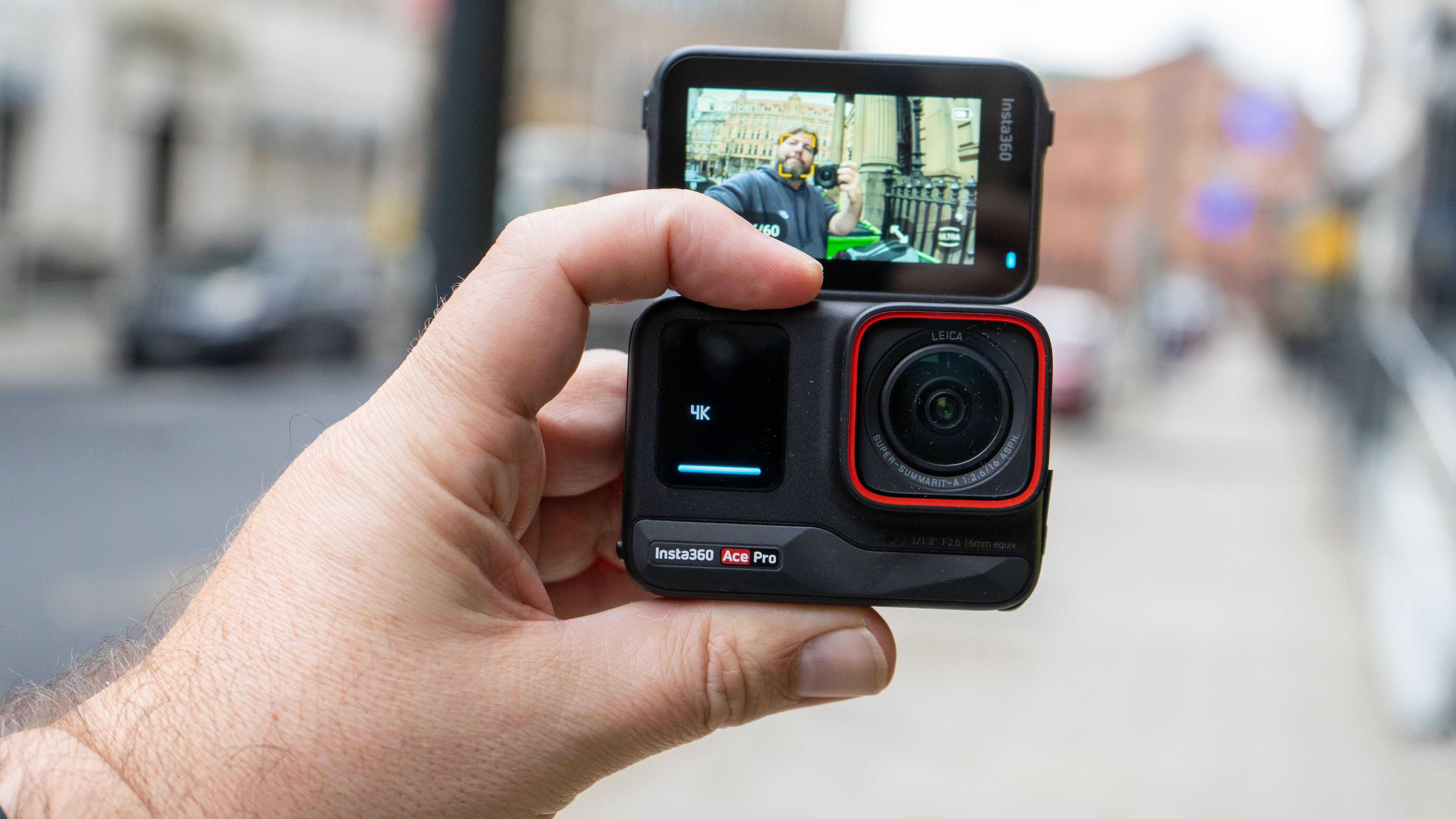
Specifications
Reasons to buy
Reasons to avoid
✅ You need to vlog: The larger flip screen is much easier to vlog with than front-facing screens.
✅ You want 8K: There's literally no competition (you also get 4K at 120fps from all the processing power!)
❌ You want the most rugged device on the list: While the hinge isn't too much of an issue the body isn't perfect taken as a whole.
The Insta360 Ace Pro is a slightly odd beast when it comes to action cameras. Like the new Ace Pro 2 it's a small – but very noticeable – amount bigger and heavier than most equivalents from DJI and GoPro. We're not talking the sort of amounts that would be seriously noticeable, but any kind of trade-off has to be well worth it in a category that is all about small and robust, right?
Well with a Leica lens and 8K there is a bit of a case for it, and 8K video recording too. The real point, though, is that the Ace Pro has a hinged screen which can be used as a monitor for vlogging. This folds away almost unnoticeably into the camera body (and clips into place).
This, it turns out, is pretty robust – far more than I'd have believed – though sadly the cover for the USB-C charging port needs some fiddling to stay in place (on the first few off the line, which, of course, is what, as a reviewer, I was testing). It's well-built, overall, but I'd be more confident with a more traditional design in rougher scenarios.
The device has extensive built-in software features, including star trails, which means creatives will be kept happy with it. There is also AI for gesture control and voice control. I'm also impressed with the magnetic surface mounting options which seemed to make it easier to quickly de-mount the device (don't worry, there is still a clippy element to this!)
The camera also has impressive noise-cancelling sound plus, now, the ability to link to DJI Mic 2.
One big thing in this camera's favour – as well as some firmware updates showing love from Insta360 – is that its value has risen from 3 to 4 stars since the RRP dropped by $50 – it's a great device, but the price premium at launch was asking a lot!
See my original review of the Ace Pro (1).
Attributes | Notes | Rating |
|---|---|---|
Features | Atop standard shooting, full range of features like starlapse, and even gesture and voice control | ★★★★★ |
Design | Slightly sacrificing size to provide a big folding touchscreen will make a lot of sense to many | ★★★★ |
Video quality | The relatively large sensor is impressive, and 8K is impressive (if you need it!) | ★★★★★ |
Value | Do you really need 8K? Here is the device's main problem! | ★★★★ |
FAQs
What is the best low light action camera?
Good question. Cameras designed to capture fast-moving images – especially slow-motion – keep their shutters open for very short periods, which isn't good for low light. The other solution, a big image sensor, means you need a big heavy camera and lens which is also not ideal here. So, as a rule, no action cameras are brilliant at shooting in very low light. That said, the GoPro Hero11 Black has made some notable strides in that area, as has the DJI Osmo Action 3.
What is an action camera?
Action cameras is a catch-all term for those designed to be used in rough conditions to capture the action from scuba diving, skiing, snowboarding, mountain biking, and other activities. Because the cameras are rugged, and usually allow for slow-motion and time-lapse, there are plenty of other uses too.
Is a GoPro better than a phone?
Although some of the latest phones, like the iPhone 14, have image stabilization like a GoPro or other action camera, do you really want to risk breaking your phone? Action cameras have a rugged and compact build which makes them harder to break, and GoPro, for example, has a Pro Tune feature to help get a more professional looking image, too.
Are action cameras good for photography?
Not always. It's easy to knock a small camera when shooting, so you'll need a good support. Secondly some don't even support still shooting – including the GoPro Hero 11 Black Mini. In bright conditions it might be preferable to keep shooting video and select stills in post, but it's worth remembering that this may be forced upon you!
Introduction to action cameras
DJI is perhaps GoPro's best-known rival, but certainly not the only one. There's a lot of crossover in this market with other areas like the best 360º cameras, and the newly updated modular Insta360 One RS Twin Edition includes both an action camera module and a 360 module – it's two cameras in one!
Don't forget that there are older models (back to GoPro Hero 8) on sale at reduced prices. Or, for a completely different take on the concept of action cameras, check out the amazing offerings from Insta360 also on our list. We thought we'd also throw you a curve ball with the DJI Pocket 3. It's not a rugged go-anywhere camera like a GoPro, but it's a pocket-sized gimbal camera with stabilization, 'follow' modes, and image quality way beyond what its size suggests.
These action cameras aren't the only way to record your adventures. For a step up in quality, check out our guide to the best cameras for vlogging.
But for now, let's get started with our top picks of the best action cams right now…
How we test action cameras
We test cameras both in real-world shooting scenarios and, for DSLRs and mirrorless cameras, in carefully controlled lab conditions. Our lab tests measure resolution, dynamic range, and signal-to-noise ratio. Resolution is measured using ISO resolution charts, dynamic range is measured using DxO Analyzer test equipment and DxO Analyzer is also used for noise analysis across the camera's ISO range.
More important – especially with action cameras – is real-world testing. We compare results against similar models that we have tested in similar conditions. I like cycling, for example.
One reason real-world testing is so important is only by testing in situations with real action can we get a sense of how the image stabilization systems work. It also offers a good idea of how the image handles light levels.
How to choose an action camera
Choosing an action camera involves balancing several factors. One is, inevitably, price. Others to keep your eye on are:
- Subscription – This is a modern issue; GoPro (and, for now, only GoPro) will seek to charge you for a cloud service that unlocks some features. Are these features worth it to you, and are there better alternatives that won't incur an ongoing cost? DJI's Osmo Action 3 becomes very tempting at this point.
- 360-degree – We have a complete list of 360-degree cameras, of which the Insta360 X3 is probably the most accessible. It's an alternative worth considering; the lenses are more exposed, but you capture footage all around the camera.
- Control – Do you need a screen to control the camera, or will you be happy using your phone? Will you have to take gloves on and off to start shooting while keeping your feet in snowboard bindings?
- Stills mode – Not every camera has one, so will you need it?
- Resolution – Numbers above 4K are impressive, though you'll likely end up editing down to 4K, where most better TVs are. It still helps have some room to crop though!
- Slow-motion – If you'll want to slow down some cool moments of action, see what the highest frame rate available is. 240fps will let you go half the speed of 120fps.
Get the Digital Camera World Newsletter
The best camera deals, reviews, product advice, and unmissable photography news, direct to your inbox!

With over 20 years of expertise as a tech journalist, Adam brings a wealth of knowledge across a vast number of product categories, including timelapse cameras, home security cameras, NVR cameras, photography books, webcams, 3D printers and 3D scanners, borescopes, radar detectors… and, above all, drones.
Adam is our resident expert on all aspects of camera drones and drone photography, from buying guides on the best choices for aerial photographers of all ability levels to the latest rules and regulations on piloting drones.
He is the author of a number of books including The Complete Guide to Drones, The Smart Smart Home Handbook, 101 Tips for DSLR Video and The Drone Pilot's Handbook.
